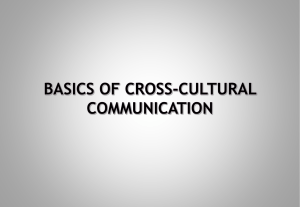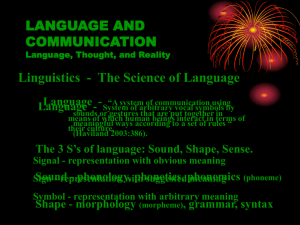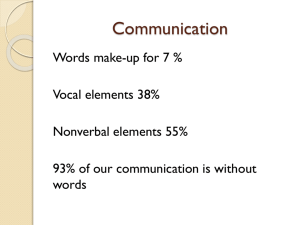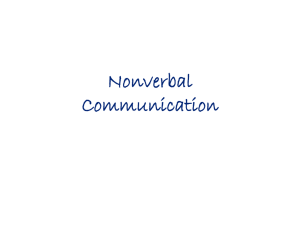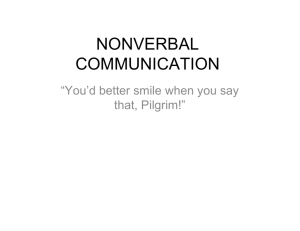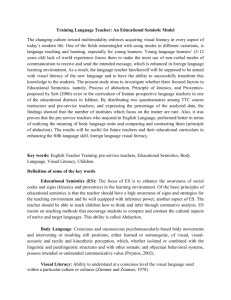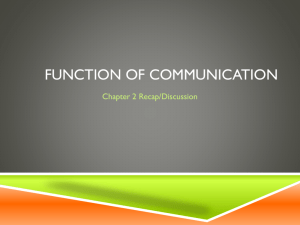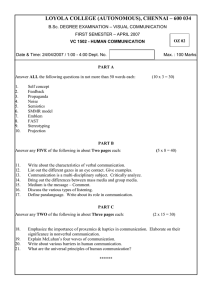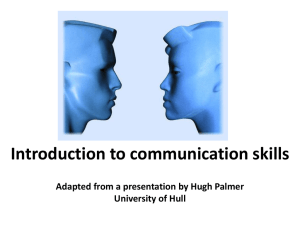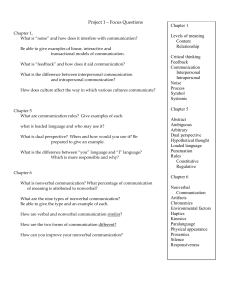The Message
advertisement
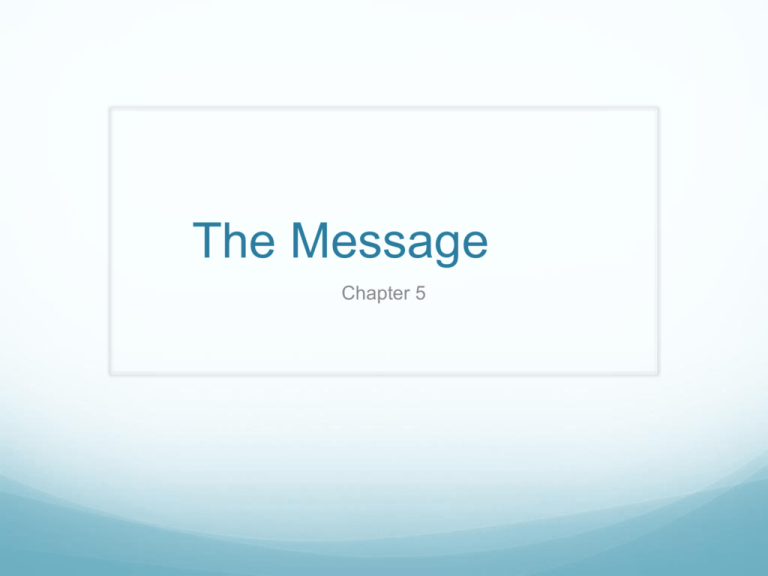
The Message Chapter 5 Semiotic Tradition Semiotics of language Ferdinand de Saussure Modern founder of structure linguistics Language is arbitrary Structure approach of Language Forms Consist of speech, sounds, words, and grammar Language use is NOT arbitrary Language needs meaning to represent something Understanding the Structure Saussure Key is difference in three areas Sound Letters sound different: p versus b Word form differs Pat versus Bat Grammatical forms Verb tenses change meaning “has run” versus “will run” Language vs. Speech Language (langue) Formal system of language used in communication Can be analyzed apart from its use (grammatical etc) Constant Speech (parole) The use of language to deliver a thought or accomplish a purpose Flexible and changing Linquistics = study of Language not speech Beyond Semiotics Linguistics not enough to understand human use of language Two primary focus: Generative grammar Cognitive study of how rules impact spoken language Chomsky Discourse Use of language in communication Evaluates conversations, media productions, and speeches Nonverbal Communication http://www.youtube.com/watch?v=VfDWQG47pAQ Theories of Nonverbal Coding Includes three dimensions: Semantic Meaning of signs Syntactic How signs are organized into system with other sign Pragmatic Effects or behavior created by signs Eight aspects of Nonverbal Communication Kinesics Clothing and artifacts Voice: Paralanguage Pitch, volume, rate, nonfluencies, silence Proxemics Eight Aspects of Nonverbal Communication Colors Chronemics Touch: Haptics Olfactics: Smell Tell me her story Kinesics Ray Birdwhistell, Kinesics and Context, page 127 Seven assumptions used for his theory of body language Cultural Gaffes Proxemics Edward Hall Three types of space Fixed-featured space Unmovable things Semi-fixed feature Movable objects Informal Space Personal territory between people Intimate, Personal, Social & public Proxemics and Culture http://www.youtube.com/watch?v=gscRJhDNVmI Theoretical Approaches to Understanding the Message Speech Act Theory Action Assembly Theory Message Design Models Speech Act Theory “ I will pay you back” Accomplishes the following: Utterance Act Propositional Act Illocutionary Act Perlocutionary Act Two types of rules with Illocution force Constitutive rules Used to tell how to interpret statement Creates framework for understanding Regulatory Rules Tell how to use speech to accomplish a goal Action-Assembly Theory John Greene Evaluates how we organize knowledge to form messages Uses two types of knowledge Content Knowledge Knowledge about things, or events in speech Procedural Knowledge Knowledge about how to do things Takes center stage in theory Process of associating common actions becomes procedural record John, How are you? Fine, Mary, how are you? Message Design Models Planning Theory Charles Berger Explain the processes people use to plan communication behavior Communication Plans Mental images of steps used to accomplish a goal
